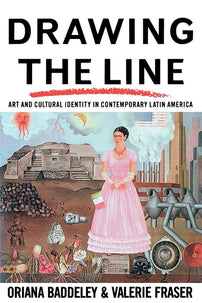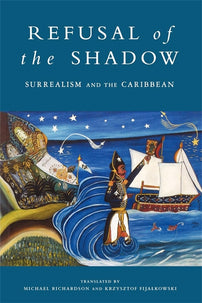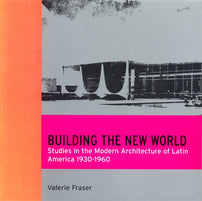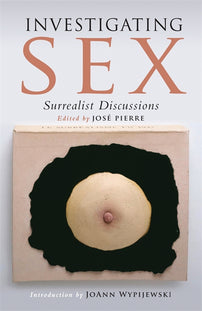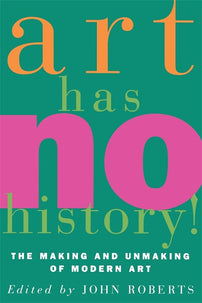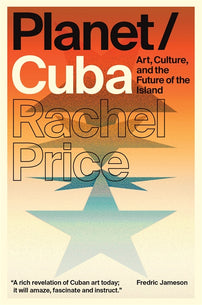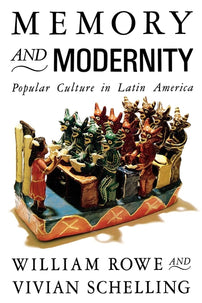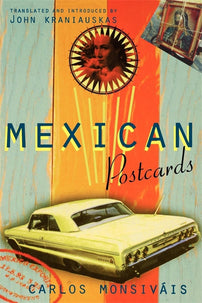The Surrealist Continent
Throughout the twentieth century the concerns of artists in Europe and North America have had an obvious impact on the art of Latin America, yet it is important to recognize the particular significance of movements such as Surrealism or abstraction within a non-Western context.

Published in 1989 as part of the Critical Studies in Latin American Culture series, Oriana Baddeley and Valerie Fraser's Drawing the Line: Art and Cultural Identity in Contemporary Latin America surveys [art from...] in chapters organized by historical themes. "Given the ambiguities of the term," the authors write in their introduction, "what is Latin American art? Is it not arbitrary to group these countries together, dictatorships and democracies, rich and poor, regardless of racial or cultural mix?"
The specifically Latin American features or qualities which can be identified in the work we discuss vary enormously. On the one hand, there are artists who work in a more or less representational mode, producing images with specifically Latin American themes, where the national or cultural signifiers are explicit. On the other, we include works of art which may have no more than a faint echo or evocation of, for example, the formal concerns of native American art or the texture of colonial paintings, but the recognition of these enhances our understanding and appreciation of the work concerned. And then again there are cases where perhaps it would be hard to identify any direct or indirect references to Latin America but where to view them as other than self-consciously Latin American would be to miss the point, as, for example, where the forms or techniques used are intended to be seen as in opposition to those of Europe or the United States. We have included within our definition of Latin American art the work of artists who have chosen to live abroad but for whom Latin America remains one of their central reference points, and others who are not Latin American by birth but who have made it their home.
The excerpt below, written primarily by Baddeley, examines the dynamic between Latin American art and European surrealism, which often fetishized the continent, but whose precepts were adapted to different ends by a variety of Latin American artists.
The formulation of a visual language capable of encompassing the divergent traditions of representation intrinsic to modern Latin America has been the goal of many twentieth-century artists, from the Mexican muralists through to young Brazilian artists such as Fernando Lucchesi. However, in finding a formal signifier of cultural identity it is difficult, if not impossible, to dislocate the work of Latin American artists from the frequently analogous concerns of more traditionally recognized art practice. Throughout the twentieth century the concerns of artists in Europe and North America have had an obvious impact on the art of Latin America, yet it is important to recognize the particular significance of movements such as Surrealism or abstraction within a non-Western context.
Often the ideas of their European contemporaries would themselves contain specific references to issues of particular relevance to Latin American artists. Nostalgia for lost innocence, for the ritual power of the art of the past with its mysterious codes and patterning, had an added political dimension in many Latin American countries. The pre-conquest past, though often just as alien to their contemporary life as it was to a Parisian avant-garde, constantly served to differentiate Latin American culture from that of Europe.
Reference to that past carried with it the implicit awareness of the colonial conflict. Interest in the art of the continent's ancient inhabitants was not a simple rejection of accepted traditions of representation as it was for artists such as Picasso; it was also an assertion of the special identity of their own culture.
On another level the incorporation into the practice of fine art of the art forms of subcultures and the whole spectrum of material which falls into the Latin American categorization of “arte popular” called into question not just class and gender but also race. Even in the work of those exiled artists absorbed into the mainstream of Western art, the governing criteria of their art appear different from a Latin American perspective. The processes of cultural syncretism at work are frequently overlooked but can add greatly to the understanding of particular artists output.
It would be difficult, for example, to locate the work of the Uruguayan artist Joaquín Torres García (1874-1949) without some knowledge of the aesthetic debates of Piet Mondrian and Theo van Doesburg.1 Yet his paintings are equally dependent on an understanding of the aesthetic conventions of the pre-Columbian civilizations of ancient America. Most of Torres Garcia's creative activity emerged outside of Latin America. At seventeen he had returned with his family to Spain, spending the bulk of his working life in either Barcelona or Paris. His first contact with the pre-Columbian past was probably in the collections of the Musée de l'Homme in Paris rather than in his birthplace.2 Yet it is equally obvious that the impact of that past on his work was of a very different nature to, say, that of Toltec sculpture on Henry Moore.3 A work such as his Indoamérica of 1938 is a homage to both the Neoplatonic ideals he shared with his Dutch contemporaries and the stylized geometry of ancient America. As such it is not an exploration into the exotic but an attempt to unify the shared characteristics of his separate heritages. Torres Garcia's attempts to find universal proof of the validity of abstraction as a basis for contemporary art practice were dependent on an awareness of difference and collectivity: the separate traditions of the old and the new world and the need to negotiate the space between the two, to find the space that he himself occupied. The need to explore the past, to locate the distant body of the many-headed Hydra of contemporary culture, remains a strong motivating force for many Latin American artists, whatever the specific idiom of their work.
While the modernist recognition of early forms of abstraction has a specific resonance in Latin America, it is not the most powerful of conjunctions of interest. Surrealism, of all twentieth-century categorizations of artistic form, technique and subject, has had the most pervasive impact on the art of Latin America. The concerns and priorities of the movement, originally formed around the pronouncements of the French poet André Breton 4 were both nourished and consumed by the diverse art practices of Latin America. Breton was initially involved with the anarchic Parisian Dadaists, but from the 1924 publication of his First Manifesto of Surrealism he became an increasingly powerful force in the European avant-garde. The relationship of the mainstream of Surrealism to what was perceived as the marginalized, yet truly authentic, world of art production beyond the boundaries of European art represents a complex model of artistic symbiosis.
The doctrines of Surrealism developed out of the European experience of the First World War and the transformations of art and literature engendered by that cataclysmic event. However, its continued survival was at least to some extent based on its claims to be both international and subversive. Breton's search for the fixing of “a certain point of the mind at which life and death, the real and the imagined, past and future, the communicable and the uncommunicable, high and low, cease to be perceived as contradictions” 5 gave Latin America, in particular Mexico, a privileged place within Surrealist writing. He saw Mexico as a “naturally surrealist” location, embodying the very contradictions essential to Surrealism.6
The conflicts within the post-colonial cultures of the continent presented fertile new pastures for the Surrealist explorer, who found in the ancient, the popular and the self-consciously political art of Latin America a visual language of opposition. The fascination with Mexico, evidenced by Breton's Souvenir du Mexique of 1939, in which both the poet's visit and the place itself take on iconic importance, played upon the country's function as cultural gateway. On one side lay the rational, ordered oppression of the established European civilizations so hated by the Surrealists, on the other the mysterious chaos of the irrational and unknown represented by the native cultures of America. The complex blend of race and religion, of native and exile, oppressed and oppressor was seen to manifest itself in the visual culture of Latin America, which like a bilingual text functioned as an access point — that fixed conjunction searched for by Breton between the perceived polarities of human existence.
At the same time Surrealism offered the Latin American artist a place at the high table, welcoming proof of the movement's internationalist aspirations. The Cuban Wifredo Lam (1902-82) and the Chilean Roberto Matta (born 1911), though both working primarily outside of Latin America, embodied those aspects of their native culture most admired by the European exponents of Surrealism. It is ironic that the very process of their acceptance into that movement simultaneously defused the most explosive components of the two artists' work, absorbing the specific into the general, transforming the original into the derivative. Lam has been continually overshadowed by his role as Picasso's protégé,7 while Matta has been consigned to the position of go-between: the Surrealist disciple evangelizing the New York art world.8 It is rare for either artist to be recognized as directional, as addressing specifically Latin American issues or as manifesting the problematic relationship of colonial and post-colonial cultures. Nevertheless, the work of these artists provides an important precedent and highlights issues of continuing relevance to a younger generation of Latin American artists.
The international reputations of Lam, Matta and their Mexican contemporary Rufino Tamayo (born 1899) also serve to illustrate some of the generally held stereotypes of the Latin American artist. Surrealism defined itself as primarily preoccupied with “otherness,” whether expressed through insanity, social deviancy, or the strangeness of differing cultural norms. The function of the Surrealist was to act as a catalyst, transforming banalities into bayonets, seeking out and unleashing subversive tendencies within his own culture, to undermine from within a society seen by Breton as a “petty system of debasement and cretinization.”9 The movement subjected to particular attack the belief in a rational ordered universe governed by an all-seeing beneficent deity, represented by the accumulated heritage of classical philosophy and Christian morality.
Traditional contraventions of this Graeco-Christian model of social order were embraced as revolutionary antecedents of the Surrealists themselves. The perceived opposites of civilized values were sought out and adopted as emblems of the Surrealist cause. In Third World countries caught in a battle for some measure of cultural independence, Surrealism offered a validation of their own internal languages of rebellion. Dreams and magic replaced reason and morality, the shaman usurped the priest.
Latin American artists attempting to confront the contradictions of their heritage, to forge a cultural identity which encompassed the divergent strands of colonial history, could find within Surrealism a prioritization of their own concerns. The interest of an artist such as Lam in the Afro-Caribbean roots of his own and Cuba's past, could be easily absorbed into the European avant-garde's fascination with African sculpture and “voodoo” ritual. It is important, however, to distinguish between attempts to consolidate a fragmented culture and the symbolic appropriation of others. Lam's paintings debate the nature of syncretism as a means of understanding his own culture and in that sense have radically different aims to superficially similar works by Picasso. Lam had been introduced to the Spanish painter in 1938 and both artists had recognized in each other's work a shared fascination with African art. In a painting (1950) the reference to Picasso's Guernica (1937) is obvious, a self-conscious play as knowing as Picasso's own numerous reworkings of Manet or Velázquez. The sombre tonality and explicitly parodied outstretched hand look back to the form and iconography of Picasso's monumental treatment of the inhumanity of war. The sexual ambiguity of the composite forms of Lam's mysterious creatures also refer to Picasso's fascination with the visual pun, with the shifting identity of the drawn image. It is important to remember, however, that such fascination itself grew from Picasso's interest in African sculpture.
The angular forms of African sculpture, first encountered by Picasso in the ethnographic collections of the Palais du Trocadéro, continued to permeate his work throughout the century, became a standard component of his visual vocabulary, and were eventually absorbed into the wider languages of twentieth-century art. It is that interest, and the issues raised by the modernist recognition of the existence of culturally divergent forms of visual representation, which serve as the starting point of Lam's aesthetic. In Luz de arcilla the tripartite division of the composition presents the spectator with a complex ménage à trois; strange creatures with both human and animal characteristics confront each other in an enclosing darkness. The shadowy background has the warm brownness of Velázquez or Goya rather than the deliberately modern cinematic monochrome of Guernica, immediately putting Lam's painterly discussion into the past tense. This darkness of the picture surface congeals and evaporates; like primaeval mud it both forms and conceals its inhabitants. These figures seem caught for ever in a sexual ritual evoking memories of Marcel Duchamp's Large Glass 10 with its fixed coordinates of desire and frustration, yet that work was suffused with the bright light of the scientific laboratory. Here the setting has the mysterious drama of a jungle clearing and the almost sweaty darkness of the tropical night.
The background figure on the left stands alone, a homage to Lam's distant African heritage, the abundantly female buttocks and belly surmounted by an impassively masked head. The sharp lines associated with African sculpture overlay the unmistakable form of the famous “Venus of Lespugue,” the prehistoric fertility figure referred to over and over again by Picasso in the 1930s. The combined phallus/vagina imagery of this ancient figure serves to emphasize the antagonistic duality of the principal characters, while simultaneously representing an idealized unification of both physical and cultural divisions. The composite forms of the two central figures are dominated by the recognizably equine characteristics of hoof, tail, and muzzle. This horse may belong to the stable of Picasso but it is equally that of the sixteenth-century conquistador, it carries with it the ambivalent relationship of Lam to the European legacy in the Caribbean. The light which both illuminates and activates the protagonists, however, is the ritual light of santería, the syncretic Afro-Cuban religion of Lam's childhood memories.
If the iconography of a work such as Luz de arcilla is given meaning by the specifics of Latin American history, it is also important to recognize the formal self-consciousness of Lam's visual language, since it is this level of conscious play which is so consistently denied to artists defined as outside the mainstream of the “modern.” Lam's painting is as much about painting as it is about history. European conventions interweave with those of Cuba's racially disparate cultures, producing a complex reflection on the nature of representation itself.
In this context the relationship of Lam's art to that of Picasso becomes particularly interesting. As a Spaniard in Paris, Picasso had been constantly aware of the icons of Spain's “Golden Age,” and his work abounds with references to El Greco, Velázquez, and Goya. This glorification of his own past vied with the need constantly to redefine the parameters of his visual vocabulary, plundering at will the varied non-European art forms that caught his eye. The “Hispanic” Picasso, frequently subsumed by his Parisian gloss, has a particular resonance in the Latin American context. He can be seen to embody the contradictory values of that continent's colonial heritage — Cortés and Velázquez, exploiter and redeemer, rapist and father. As the exiled Picasso, the painter of Guernica and the political radical at odds with the Spanish Church and the regime of Franco, he could stand for the positive strands of Latin America's Hispanic past. However, as an archetype of revolutionary modernism he continues to represent the exclusively colonial characteristics of modernity itself. In painterly terms Picasso was often a beneficent colonial explorer, proudly parading the spoils of his conquests. Lam wryly inverts such practices, revealing the cultural politics at the heart of the languages of art. At the same time as traditional appraisals of Lam's work frequently see no further than the exotic, the problems addressed by his paintings are masked by an unshakable faith in the unique authenticity of Picasso's art. Picasso can construct languages, others merely use them; the conscious manipulation of Picasso's style does not conform to Lam's perceived role as acolyte.
While Lam is seen as stylistically derivative, few question the uniqueness of the contribution of Roberto Matta. In fact, the opposite can be said to be true; Matta is, if anything, isolated in his uniqueness. Breton espoused Matta with the fervour of an ageing Don Juan faced with impotency. He initially found in the work of his new protégé all the Surrealist virtues by then perceived as lacking in artists such as Dali. In 1944 he could declare, “It is Matta who holds the star most steadily above the present abyss which has swallowed all the features of life that might make it priceless. At Breton's prompting Matta had produced what amounted to a Surrealist critique of the rationalist strands of modernist practice; his “Mathématique sensible – architecture du temps.” 11 In this short written presentation piece (which appeared in the spring edition of the Surrealist magazine Minotaure in 1938) Matta recanted the teachings of the great modernist architect Le Corbusier in whose architectural practice he had been training since 1934. Deliberately parodying his former teacher’s credo of “Mathématique raisonnable,” 12 Matta called for “walls like damp sheets which deform themselves and marry our psychological fears, and offered a denunciation of a logically pure modern architecture.” 13
For fellow Surrealists, Matta's conversion to the movement represented a victory over the forces of scientific law and designed order, but also symbolized the unleashing of his Latin American soul from the constricting body of Eurocentric rationalism. Matta's work, during his decade as Breton's chosen Surrealist painter, exemplifies not only Surrealism but also the values of otherness traditionally imposed upon the colonized subject. Such an elision was intrinsic to the subversive practice of the Surrealist, yet simultaneously reinforced restrictive stereotypes of Latin American culture.
The intrinsic characteristics of post-Renaissance European art were seen to be dependent on the mathematic surety of perspectival space, the painter's skill lying in the ability to manipulate and mask the strict conventions of art's secret geometry. Earlier twentieth-century painters, such as the Cubists, had attacked the European dependence on illusionism, emphasizing the flatness of the canvas and the process of painting as an end in itself. Matta's work of the 1940s broached similar issues but viewed them through the optical distortions of Surrealist automatism. His approach was not to deny the existence of an illusionistic picture space but to create a giddy world of shifting floors, collapsing skies and literally vanishing horizons. To enter into the painted universe of Matta is to lose all certainty in the governing laws of matter, a pun much played upon by the artist himself. A painting such as A Grave Situation (1946) presents the spectator with a series of contradictions; the room without walls, an interior exterior inhabited by strange objects which seem in the process of constant assembly and deconstruction. Dominating the composition is an authoritative composite figure — a living machine, both insect and human, with the timelessness of an Egyptian deity. It stands like a science-fiction school teacher surrounded by the spinning desks of absent pupils. Matta presents us with the perfect world through the looking glass, where solids dissolve and past and future converge.
In Matta's paintings from this period perspective is not confronted and discussed, as it was by the Cubists, it is inverted. As a Surrealist painter he revealed the parallel universe of contradictions so constantly evoked by his colleagues. Within a Latin American context, however, his imploded and chaotic worlds are typical of the obverse nature of otherness. It seems too cogent a coincidence that Matta's fall from Surrealist favour and ensuing expulsion from the movement in the late 1940s was initiated by his desire to evolve a more assertively cerebral art form. His growing interest in the work of Einstein and search for a “form of reason that can reason the eternal new” (Matta, May 1977) 14 challenged his role as representative of unreason.
More recent works, particularly his Storming the Tempest drawings of 1982, reveal an awareness of Latin America's complex relationship to Europe. The drawings illustrate the colonial myths at the heart of Shakespeare's Tempest 15 and construct a contemporary allegory of cultural coexistence. Matta's “Brave New World” is one able to accommodate both the magical technology of a colonialist Prospero and the native energy of its indigenous Ariel. Despite his longstanding appreciation of the pre-Columbian cultures of America, Matta recognizes that the rigid oppositions of the initial conflict — Prospero versus Caliban, Spanish conquistador against Aztec warrior — have lost definition in the racial mix of Colonial Latin America.
Nostalgia for the pre-conquest past of the Continent carries with it a constant reference to the colonial process but at the same time can serve to deny the complex realities of the culturally hybrid present. For Matta, Ariel is that indefinable spirit of the New World, free yet enslaved, elusively denying characterization. He both serves Prospero and plots against him but through all retains his own magical identity. On a formal level the drawings employ both the stark pictographic qualities of an ancient Mexican codex 16 and the automatist unpredictability of Matta's familiar style. Both the protagonists and the formal languages are endowed with culturally symbolic meanings, the pre-conquest, colonial, and post-colonial being articulated by alternating visual means.
For Torres García, Lam, and Matta the problem lay in bridging the gap between the current languages of the modernist avant-garde and the requirements of being Latin American artists. The Mexican Rufino Tamayo's work responds to rather different demands. Like his contemporaries Lam and Matta, he has a recognized presence within traditional art history and like them he spent much of his working life outside of Latin America. Admired as a great colourist, Tamayo is seen to unite the concerns of Picasso, whose work has had an acknowledged influence on his own, and Matisse. However, his primary reputation outside Latin America rests upon his opposition to the didactic aims of the Mexican muralists.
At the height of the mural movement in the 1920s and 1930s, Tamayo chose to disassociate himself from his contemporaries. In so doing he initially excluded himself from the mainstream of Mexican art. Opting, as Octavio Paz has put it, “for solitude, criticism. He refused to reduce his art to yet another form of political rhetoric and he decided to pit his own idiom against the so called national style of painting.” 17 In the long term this “criticism” has tended to enhance rather than detract from his work. In terms of the continuing marginalization of the self-consciously political art of Latin America, Tamayo's work is traditionally judged as exemplifying the return to painterly values, a defusing of the threatening aspects of the Mexican aesthetic debates. While the muralists publicly denied the function of painting as a commodity, the work of Tamayo is both decorative and assertive of painting as an object unto itself. His highly collectable works embody, more so than those of any of the other artists being discussed, the acceptable face of Latin American art: not too different to be challenging but manifesting an exoticization of recognizable and familiar painterly forms.
Tamayo's status within Mexico is also helped by the international, particularly North American, approval of his work but his unquestioned pre-eminence is evidence of a more substantial basis to his reputation. 18 Whatever the reasons for Tamayo's popularity abroad, for many Mexicans he also epitomizes vital characteristics of their culture. This is not just by virtue of longevity (although he does represent a physical link with the most dynamic period of art production in Mexico, managing to outlive his exact contemporaries Orozco and Siqueiros, and the younger Kahlo). Probably the most telling of the characteristics of Tamayo's work is his ability to synthesize coherently the prevailing trends of mainstream art practice and the specific concerns of contemporary Latin American Culture, while maintaining a formal originality. References to other artists seem strangely distanced from the often subtle yet haunting presence of the paintings, with their dense, worn surfaces. Picasso, Dubuffet, and Rothko are all evoked in terms of their formal languages but Tamayo does not appear interested in the more knowing modernist game of deliberate reference.
A possible exception is Picasso's Guernica, which emerges again as the primary source of a language of Latin American modernism. After seeing the painting in New York where it was installed in 1939, Tamayo's work of the 1940s revealed his increasing interest in allegory and animal archetypes. In such paintings as Animales/Animals (1941) and Leon y Cahallo/Lion and Horse (1942) the debt to Picasso is made clear in the upturned heads, taut bodies and expressive distortions of the animal subjects. At the same time there are important differences between the animal imagery of the two painters. Picasso uses such references emblematically, as familiar cultural symbols, and plays upon their long histories of associated meanings. In Tamayo's work the animal protagonists are stripped of these references to a literary and artistic tradition; they have none of the deliberate artificiality of Picasso. They are more the nahual spirit guides of the shaman than the heraldic representations of abstract concepts.19 In this transformation of shared motifs, Tamayo articulates the preference of many of his contemporaries for the generalities of the Jungian archetype over the classicism of Freud. This preference, however, is also determined by the importance placed in Jung's writing on native American cultures.20
Like most twentieth-century Mexican artists the pre-Columbian past features prominently in Tamayo's work, not as the specific narrative of the work of Diego Rivera or as the political metaphor of Siqueiros, but as distant archetypes of human behaviour. The dogs featured in Animales are related to the famous pre-Columbian clay effigies from Colima but in the final instance they are not to be read as specifically Mexican dogs.21 They are generic dogs, whose existence outside of Tamayo's painting is not important. Similarly, in a later work such as Carnavalesca (1974) the presence of pre-Columbian sculpture is evoked but never described.
It is in the surface of the paintings themselves that the links between past and present are made most forcibly. However brightly coloured, Tamayo's images seem sunbleached and weather-beaten, as if discovered by an archaeologist rather than an art critic. The textured surfaces of his paintings have a false patina of age which constantly contradicts the self-conscious modernity of their formal composition. They assert their distance from the conspicuous “newness” of much modern art, claiming a similar appearance of artistic prescience to that of an ancient Cycladic sculpture in a collection of modern art. This formal denial of modernity, deliberate masking of the textures of the industrial world, is a frequently used device among Latin American artists. It serves as a visual proof of the uneasy relationship seen by many Latin Americans to exist between the colonial past and the technological power of their North American neighbour. It reinvokes the divide set out so cogently by Kahlo's Self-Portrait on the Borderline.
The archaic fragility of Tamayo's paintings is also a feature of the work of artists such as the Nicaraguan Armando Morales or the Peruvian Tilsa Tsuchiya. In a work such as Morales's Two Figures (1970) the distressed texture is reinforced by the subject matter. Here the reference to the archaeological past is more explicit. The two female figures of the title sit astride strange plinths reminiscent of Mexican temple platforms. Both have articulated limbs which evoke memories of the Surrealist Hans Bellmer's fetishistic dolls.22 The figure on the left merges into the stone of the architectural setting, while her upper torso with its missing arm has the Sculptural qualities of a classical Venus. Like the rock from which she has been carved, dark forms twist and converge behind her. By contrast, the figure facing her is flesh and blood, with an almost photographic reality clothed by the artificiality of her doll-like legs. The artistic signifiers of the ancient world of both Europe and America serve as the mirrored image of a not quite formed present.
Tilsa Tsuchiya’s Machu Picchu (1974) which has already been discussed in a different context, deals with a similar theme. Here the translucence of the surface is also used to connote the oxygen-starved altitude of the eponymous Inca city. Again, a female nude emerges out of obviously pre-Columbian stonework, yet none of the components of Tsuchiya's picture seem fixed. They float between an alternating series of meanings, as nebulous as the mists which cover the bulk of the painting's surface. The twin peaks of Machu Picchu, which flank the central figure, seem to have split apart to reveal her. Horned shadow spirits fit across their surface, like the onlookers of a darkened theatre auditorium. The Inca Stonework on which the figure rests reflects the rounded curves of her body. Navels, breasts, feet and schematic faces emerge from the stone and then slip back into the coiled form of a sculpted serpent, yet no one facet of its shifting appearance dominates. While recognizably female, the main figure takes the unmistakable shape of the famous Intihuatana or “hitching post of the Sun,” the most prominent of Machu Picchu’s sacred stones.
As in the Morales work, there is an obvious formal conflict at play; in this instance between the illusionistic curves of the torso and the geometry of the mask-like head. The painting is made up of such oppositions; the phallic form of the Intihuatana contrasts with both the female contours that encompass it and the womb-like parting of the peaks; the solidity of the Andean rock is denied by the surrounding clouds; while the painting is also a battleground for conflicting traditions of representation. The visual languages of the Old World and the New, of illusion and abstraction, fuse, denying the polarity of the two. Tsuchiya, like many Latin American artists, seems fascinated by the formal dialectics presented by the conjunction of Amerindian and European art. Through the discussion of essentially painterly concerns the political realities of contemporary Peru emerge, the artist addressing the problematic relationship of a mestizo culture to its disparate forebears. Moreover, the work is assertively gendered, from the self-consciously sexual composition to the choice of subject matter, Machu Picchu being frequently associated with the virginal priestesses of the sun god. 23
The deliberate archaizing of the paint surface is also a recognizable feature of the work of the direct heir to Tamayo's position as official representative of Mexican art, Francisco Toledo (born 1940). Like Tamayo, Toledo is a native of Oaxaca. Of Zapotec descent, his paintings, prints and ceramics attempt to unite the themes of folk culture and high art. The hieratic animal and human figures he depicts are transformed, by the large scale of the paintings, into iconic symbols of his own special system of ritual. The surface of his paintings is frequently enriched with sand, enamels, acids, and even gold dust and appears to have been etched and rubbed to a glowing iridescence. More directly symbolic than the work of Tamayo, their physical presence is reminiscent of early cave paintings. In Mujer con liebre/Woman with Hare (1970) this archaic gloss is so convincing that it comes as a shock to see the frivolous stilettos worn by this archetypal woman, or the mischievous smile on the face of the hare. Despite the wry playfulness of such features, the image retains a ritual power.
Toledo's knowledge of the literary traditions of native Mexico frequently surfaces in his work. The complex Maya Books of Chilam Balam, scenes from which he has illustrated as prints, are a particularly favoured source. 24 These seventeenth- and eighteenth-century records of Maya ritual and belief are based on a principle of secret codes and rhythmic repetition which is echoed in Toledo's own painterly style. The rich texts also contain an earthy humour and sexuality akin to that of Toledo, whose work abounds with sexual metaphor. The nahuatl sources of the sixteenth-century Franciscan author Bernadino de Sahagún provide Toledo with some of his animal iconography, frequently unheroic creatures such as grasshoppers, scorpions and fish. This interest in the native traditions of Mexico avoids explicitly pre-conquest sources; his frame of reference is linguistic rather than archaeological. The cultural forms that interest him appear to be those with a continued, if changing, existence; the organic heritage of language as opposed to the unchanging distance of the archaeological object.
ln this sense, he deals not so much with the pre-Columbian past as the continued presence of that past in the Indian cultures of the present. While this aspect of his work draws analogies with the syncretic traditions of Mexico's popular art, Toledo is no more a naive artist than the great doyen of contemporary art, Joseph Beuys, with whom he shares a fascination with shamanistic practice.26 Toledo's aesthetic, however, has none of the automatist character of Beuys's graphic work. While the German is primarily interested in the ritual process of creativity, Toledo looks for recognizable talismans. This allows him to avoid the emphasis on the uniqueness of the self which has turned Beuys into a superstar. The magic of a work by Beuys is derived from it being just that, Beuys's work. Toledo's images make equal claim on an aesthetic ritual intensity, yet their magical powers emanate from their illusion of collectivity. They profess to speak for many, not a single isolated spirit. Within the context of Latin American culture this elision of traditions allows Toledo to lay claim to both the sophistication of the avant-garde and the unselfconscious authenticity of the continent's popular artists..
The Surrealist perception of Latin America, in which so many European myths about the “New World” coalesced, served to perpetuate the image of the continent as a location of dreams and inversions of rational order. Yet the aesthetic framework of European Surrealism has itself been appropriated by many Latin American artists as a means of articulating their own culture. If the continent dreams, then they are the politically charged revelations of Antonio Ruiz's Malinche's Dream, where the collective memories of the past challenge the realities of the present.
Notes:
1. Alfred H. Barr, Der Stiji, 1917-1921, New York 1961.
2. Torres Garcia's son first introduced the artist to pre-Hispanic art, by way of Nazca pots from Peru in the collection of the Musée de l'Homme in Paris, where he was working.
3. Susan Compton. Henry Moore (exhibition catalogue), London 1988.
4. See Franklin Rosemont, André Breton and First Principles of Surrealism: Selected Writings of André Breton, London 1978.
5. “Second Manifesto of Surrealism,” 1930, in André Breton, Manifestos of Surrealism, Ann Arbor, Michigan 1972.
6. In April 1938 Breton and his wife Jacqueline arrived in Mexico, where they stayed with Kahlo and Rivera, socializing and travelling with them and the Trotskys. In the same year Breton and Rivera co-signed the “Manifesto for a Free Revolutionary Art” (which appeared in Partisan Review), although it was actually written by Trotsky.
7. Lam was both helped and hindered by Picasso's approval, prized as a discovery of the great master yet also condemned to stand in his shadow. See H.H. Arnason, A History of Modern Art, London 1977, p. 579.
8. The most complete discussion of Matta's work to date is Matta, catalogue of an exhibition at the Centre George Pompidou, Paris 1985.
9. Manifestos of Surrealism, p. 125.
10. See Octavio Paz, Marcel Duchamp, Appearance Stripped Bare, Rachel Phillips and Donald Gardener (trans.), New York 1978, p. 125.
11. Minotatre, no. 11, Spring 1938.
12. C-E. J. Le Corbusier-Saugnier, Vers une architecture, Paris 1923. See also; Le Corbusier, Architect of the Century, exhibition catalogue, London 1988.
13. Dawn Ades, Dada and Surrealism Reviewed exhibition catalogue, London 1978, p. 315.
14. From an interview with Matta published in Matta Coigitum, exhibition catalogue, London 1977.
15. See Peter Hulme, Colonial Encounters: Europe and the Native Caribbean 1492-1797, London/New York 1986.
16. While Matta does not seem to refer to specific examples, his images evoke the presence of the ancient Mexican screenfolds. The Dover reprint of The Nuttall Codex, Zelia Nuttall (ed.), London/New York 1975, offers an introduction to the distinctive forms of pre-Hispanic writing.
17. Rufino Tanayo. Myth and Magic, exhibition catalogue, Solomon R. Guggenheim Museum, 1979, p. 10,
18. Tamayo's popularity in North America is evidenced by his one-man exhibitions at prestigious locations such as the Guggenheim Museum (1979) and the Philips Collection (1978).
19. The nahual or animal spirit guide is seen to act as the shaman or tribal healer's alter ego during journeys into the spirit world.
20. C.G. Jung, The Archetypes of The Unconscious: Collected Works Vol. 1, London 1966.
21. These pre-Columbian clay vessels from Colima in the shape of plump dogs have been popular throughout this century. There is a particularly fine collection in the Museum of History and Anthropology in Mexico City.
22. Peter Webb and Robert Short, Hans Bellmer, London 1985. 23. On the inti-huatana of Machu Picchu, see John Hemming and Edward Ranney, Monuments of the Incas, Boston 1982, pp. 147-9; on the role of the aclla or chosen women, see Irene Silverblatt, Moon, Sun and Witches: Gender Ideologies and Class in Inca and Colonial Peru, Princeton, New Jersey 1987, pp. 81—108.
24. Ralph L. Roys, The Books of Chilan Balan of Chumayel, Norman, Oklahoma, 1968.
25. Fray Bernadino de Sahagún, The Florentine Codex (trans.J.O. Anderson and C. E. Dibble), Santa Fe, New Mexico, 1978.
26. Joseph Beuys: In Memoriam, Inter Naciones, Bonn 1986.
[book-strip index="1" style="display"]

